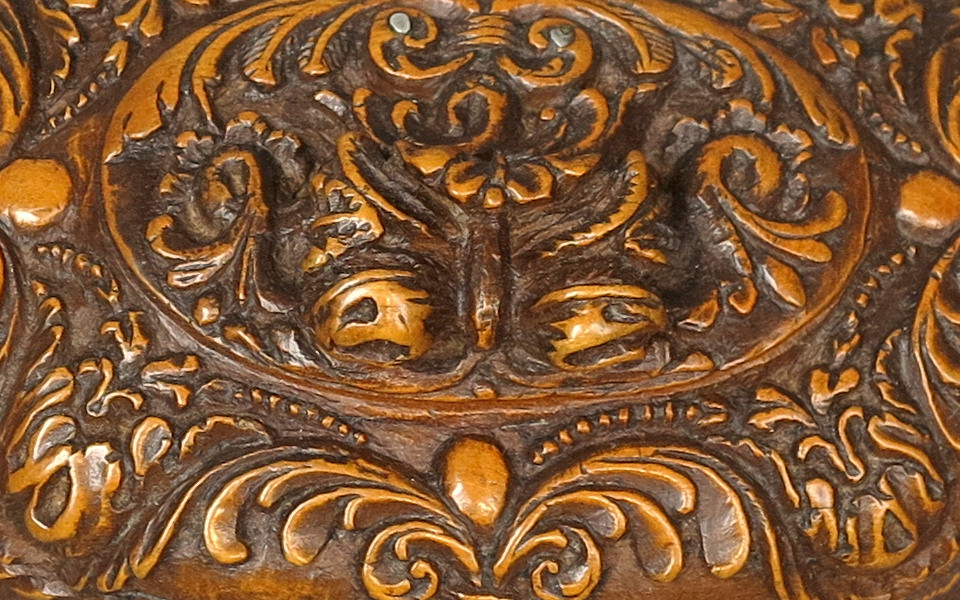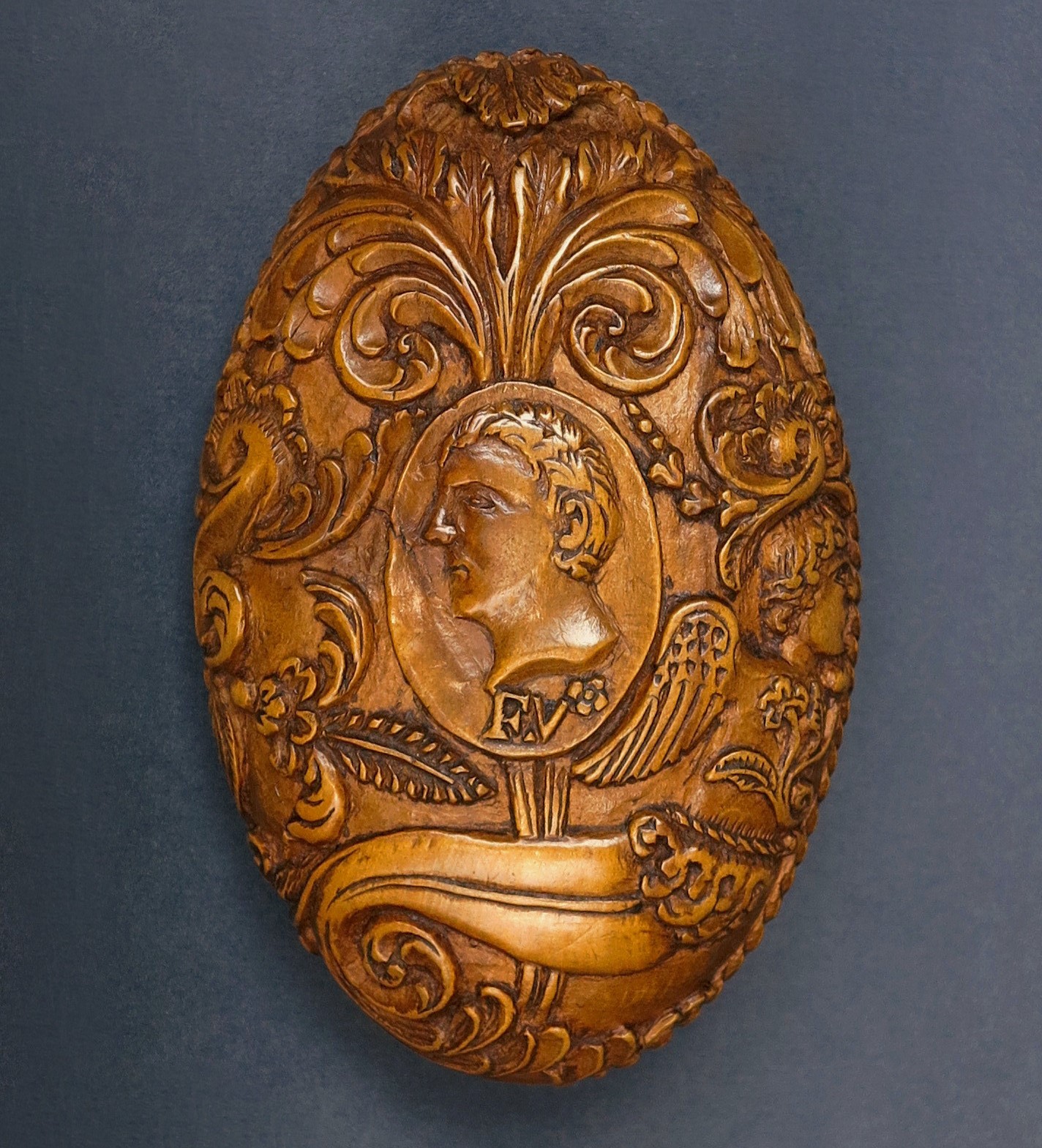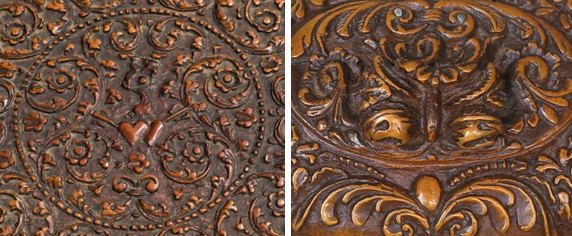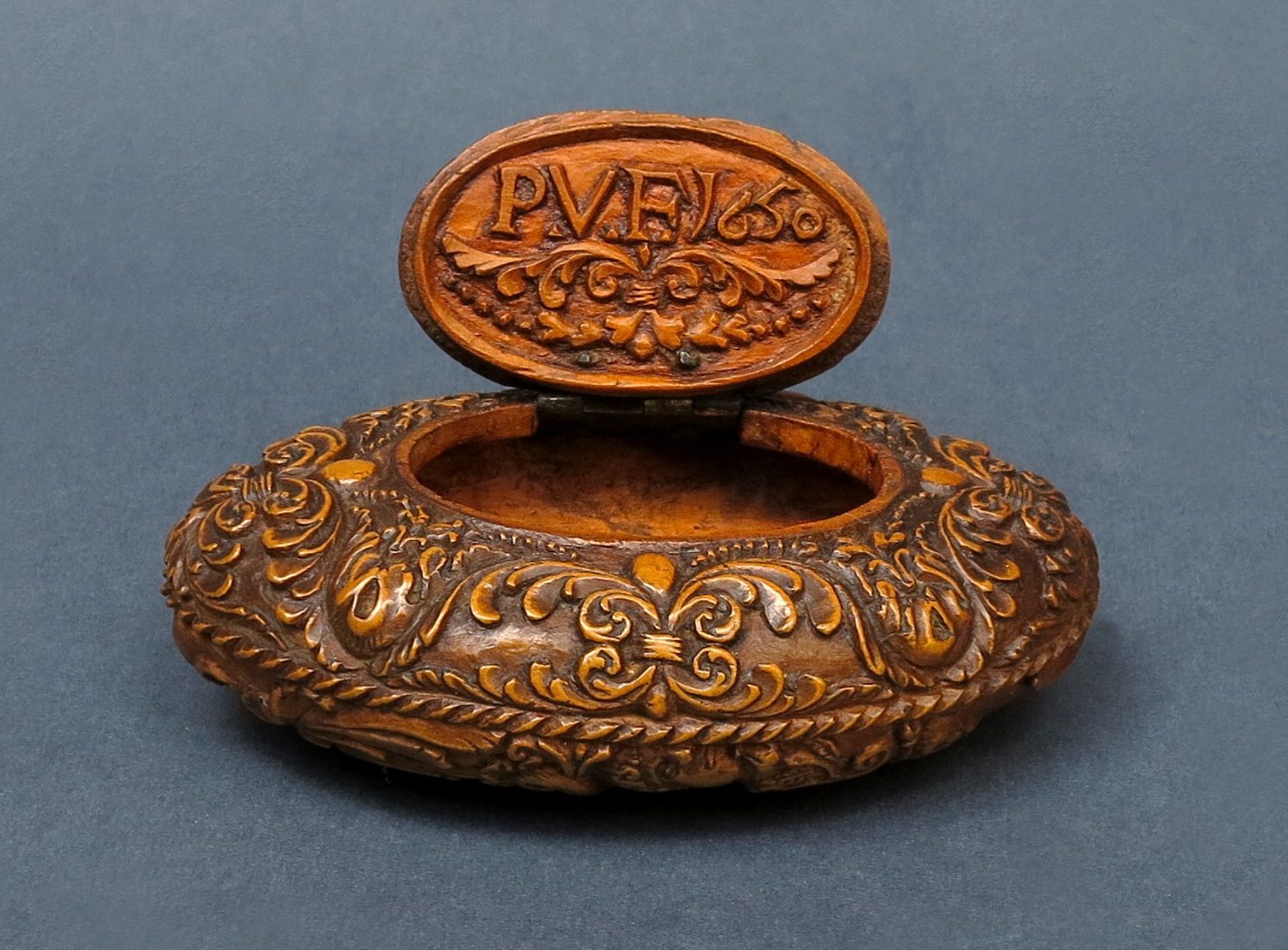
A refined snuff box dated 1650
The tobacco plant was introduced to Europe, and more precisely to Spain, by Christopher Columbus who, having seen the Native Americans pulverise and inhale its dried leaves, brought it to the Old Continent on his return from the second voyage to the New World in 1496.
Tobacco thus spread through Europe in the 16th century, slowly gaining a foothold first in Spain and immediately afterwards in France, mainly thanks to the famous Jean Nicot, Duke of Villemain, who made the plant of American origin known and appreciated for its medicinal virtues.

Nicot sent tobacco leaves and seeds to the French Court, indicating it as an exceptional remedy to cure migraines afflicting Catherine De’ Medici, in whose honour he even coined the name Queen’s Herb (Herba Reginae) for this new substance.
The custom of sniffing tobacco soon imposed itself among European aristocracies, leading to the need to make pocket-sized boxes to preserve dried tobacco leaves – immediately after shredding them, usually with the aid of a small grater – and above all to protect their aroma.
The use of such small containers, known as snuff boxes, became extremely widespread, becoming a veritable fad, from the mid-seventeenth century onwards and becoming an indispensable fashion accessory, a luxury product and a sign of distinction.

Our French snuff box is made of carved boxwood and has an oval shape with a small central lid, covering half the total length of the box. The inner surface of the lid bears a carved monogram – which most likely indicates the maker’s initials, P.V.F., where F stands for the Latin word “fecit” – and the date of creation, 1650, above an elegant ornamental motif.
The outer surface of the snuff box is entirely decorated with vegetal motifs and the bottom shows what appears to be a profile of Vespasian, the ninth Roman emperor, under which the letters F.V. (Flavio Vespasiano) are engraved together with a small flower.

The quality of the wood used, the ornamental richness and above all the date make this snuffbox exceptionally rare of its kind, so that it is difficult to find comparative examples. The only strong affinity we could glimpse is with the production of the famous atelier of César de Bagard (1620-1707) in Nancy, in which, in the same period as our snuffbox, numerous boxes and small objects were made by bois de sainte Lucie, a variety of cherry wood very similar to boxwood. The ornamental and stylistic features of the Bagard workshop’s artefacts are extremely close to the spirit of our snuffbox, as can be seen from the comparison image shown here.

SNUFF BOX
France
Boxwood
Signed and dated: P.V.F. 1650
Cm 9,5 x 6 x 3,7h
© 2013 – 2024 cesatiecesati.com | Please do not reproduce without our expressed written consent
Alessandro Cesati, Via San Giovanni sul Muro, 3 – 20121 Milano – P.IVA: IT06833070151